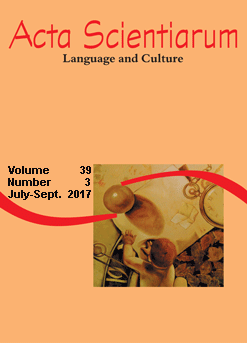<b>The disguised prince in Gil Vicente’s novelistic theater
Abstract
From 1521, Gil Vicente renounces his religious theater to dedicate himself to profane and allegorical motifs, beginning a new stage in his career. Moved by the perusal of chivalric romances that spread throughout the Peninsula, the dramatist composed a series of at least four pieces dedicated to D. João III, in which the central (or circumstantial) motif is the disguise of a prince in the lower classes, along with the following disclosure of his noble nature. Analyzing a specific corpus of the Vicentian theater (the pieces Rubena, Viúvo, Amadis de Gaula and Dom Duardos), the present paper tries to explain the historical motifs that permeate the theme of the ‘disguised prince’, considering the program of eulogy of the monarchy proposed by Gil Vicente, as well as an analysis of the nature of the humanist love spread by 16th century poets and philosophers. The disguise in the lower classes reveals the aristocratic essence of the courtesan, but also the ritualistic experience in the trajectory of the spiritualized love.
Downloads
DECLARATION OF ORIGINALITY AND COPYRIGHTS
I Declare that current article is original and has not been submitted for publication, in part or in whole, to any other national or international journal.
The copyrights belong exclusively to the authors. Published content is licensed under Creative Commons Attribution 4.0 (CC BY 4.0) guidelines, which allows sharing (copy and distribution of the material in any medium or format) and adaptation (remix, transform, and build upon the material) for any purpose, even commercially, under the terms of attribution.
Read this link for further information on how to use CC BY 4.0 properly.




















6.png)









